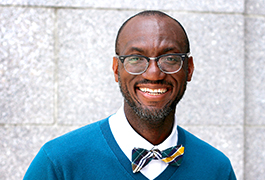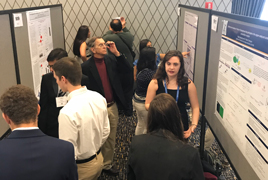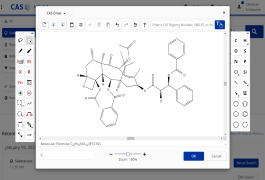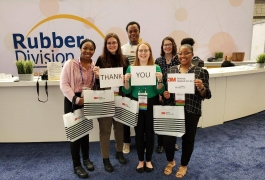Eminent Scientist Teri Odom Talks about Her Journey to the Brilliant Science of Thinking Small
It is hard not to be inspired by Teri W. Odom’s path to a career in science. Her trajectory started at a point that marks the exit for many students. While she found the undergraduate courses in chemistry and biology challenging, it was quantum physics that ignited her sense of wonder and began her lifelong study of the strange behavior of things on a small scale.
Odom grew up in many different parts of the United States, raised by two very supportive parents. “They gave me a sense that I could do anything!” she recalls. She attended Stanford University, graduating in 1996, with a B.S. in chemistry. She went on to earn a Ph.D. in chemical physics from Harvard University in 2001 under the guidance of Charles M. Lieber. She is currently the Charles E. and Emma H. Morrison Professor of Chemistry at Northwestern University and became the department chair in September 2018. She serves as Executive Editor of ACS Photonics and is on the editorial advisory board for several other ACS journals, including ACS Nano, Nano Letters, and Bioconjugate Chemistry.
On April 1, she will give the Eminent Scientist Lecture, part of the Student Program, during the Spring 2019 ACS National Meeting.
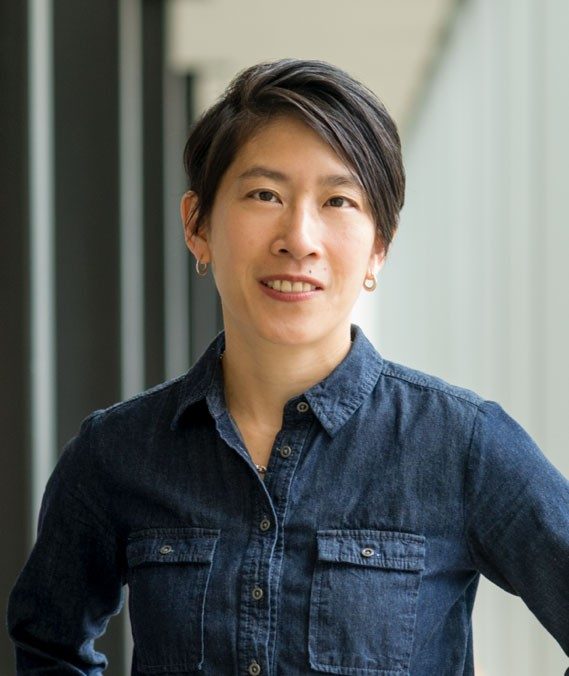
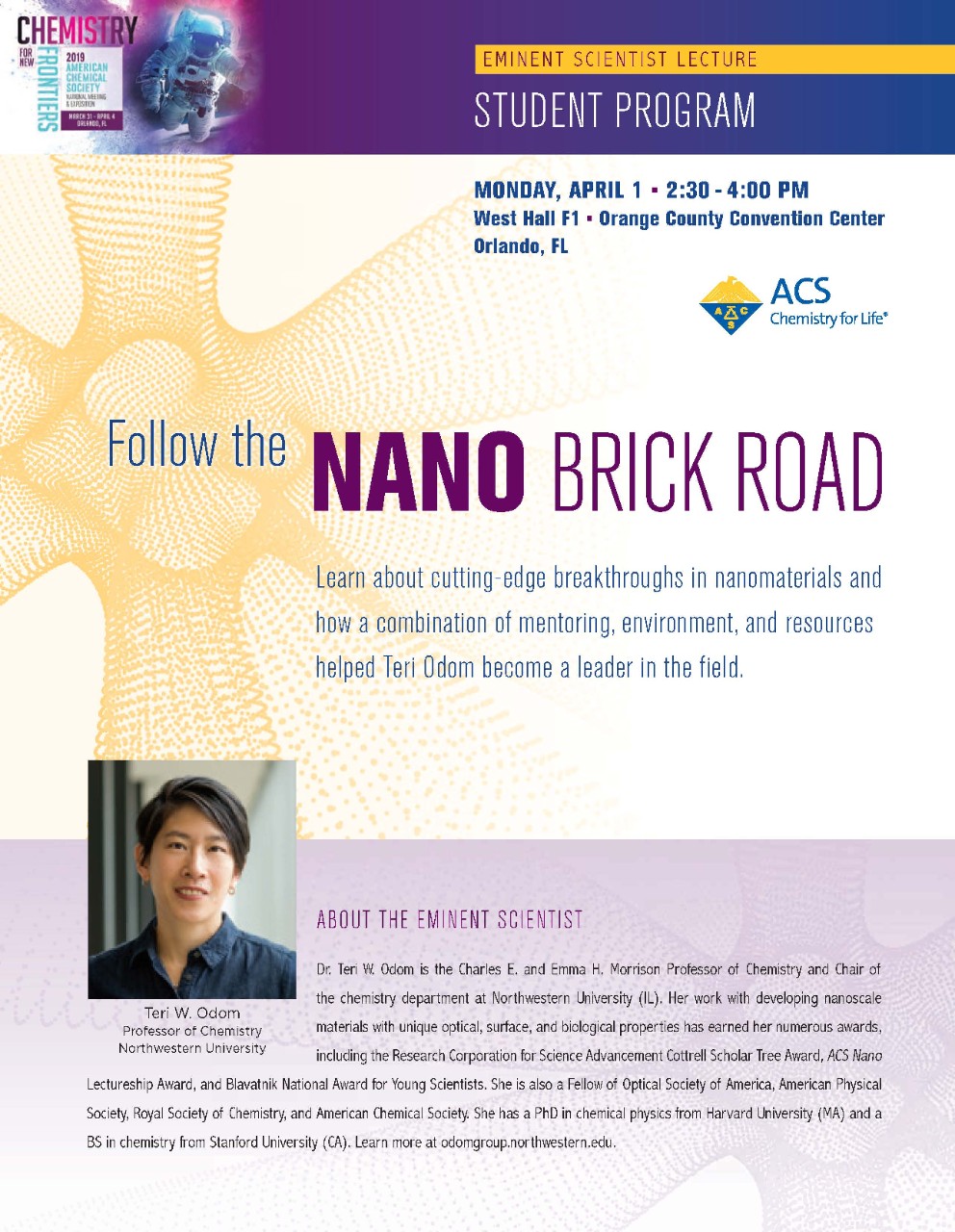
You’ve said that you were a late bloomer when it came to being serious about studying science and that it wasn’t until you encountered quantum physics that you got excited about it. The quantum world is so complex and confusing, it causes many science students to stop. What was it about the quantum scale that excited you?
My boyfriend at the time (who is now my husband) introduced me to a classic problem called Young’s double-slit experiment. When light passes through a double slit in a barrier, it is diffracted and causes a pattern of interference. Later it was shown that very small particles, such as electrons, show the exact same patterns, as if a single particle [were] going through both slits at once. But how can the same particle be in two places at once? This created a terrific sense of wonder in me that I had not felt about science before. I like to compare it to watching my son grow up. When kids are very young, they have no interest in magic. When they see a magician make something disappear, it is no different than when a parent disappears behind their hands when playing peekaboo. But at six, my son can appreciate the wonder and mystery of coins appearing as if out of nowhere.
This wonder about the unknown has been a real driver for me. When we look at matter at a very small scale it tends to exhibit very different types of behavior, and this is what we are seeking to understand.
I think the reason many students are frustrated by trying to understand the world at the quantum level is that most of us are trained to be dualistic thinkers–we think about things as hot or cold, dark or light, left or right. But there are often many sides to understanding something. Many things can be true at the same time, and we have to be innovative in our thinking to get to the ultimate truths.
You were able to participate in undergraduate research during your time at Stanford. What did you gain from that experience?
I didn’t participate in summer research as an undergrad for the first couple of summers; I just went home and did clerical work or tried my hand at selling cutlery. Again, my boyfriend suggested I apply for a summer research fellowship, and it turned out to be a great experience. I worked in the lab of Michael D. Fayer, a chemical physicist at Stanford. His lab group was doing incredible work in spectroscopy and investigating chemical reactions. The thing that made the greatest impression on me was the way they welcomed me into the group. The grad students and postdocs all went out of their way to help me and make me feel like I had something to contribute.
What are some of the real-world applications for your current research?
Our lab group has been designing structured nanoscale materials that exhibit extraordinary size- and shape-dependent optical properties. We pioneered a number of nanofabrication tools that can create nanoscale lasers that exhibit tunable color and can manipulate light at the nanoscale level.
This has great potential in several areas, including medicine and computing technology. The application to medicine is particularly appropriate because of the scale. The idea of having very small gold nano constructs that could target specific points in breast cancer cells has great potential. The hard thing about medical applications are the many barriers that lead to clinical trials and eventual approval for therapies.
There are also opportunities for innovation in computing technology. Existing computer chips are composed of devices that function by moving electrons around. This approach has some fundamental limits as the devices (such as transistors and diodes) get smaller and smaller. Modern manufacturing is approaching these limits with current technology. Replacing electrons with photons in an optical-based system could open up new levels of miniaturization and speed in computing and communication. But this type of change would involve huge challenges of replacing our current technology, which is well-established.
Do you have any pet peeves about the way your area of science is covered by the mass media?
At one time it worried me that the coverage of nanotechnology was being overhyped. The press was filled with all the ‘magic’ things that materials on the nanoscale could do, or potential applications that would soon appear. These days I’ve come to think that just about any coverage we get for science is a plus, so long as it is true and relatively accurate. There is no place for the out-and-out false coverage that follows some science topics.
It still irks me when there is a mention of ‘chemicals’ in products, as if they are only the toxic or foreign substances involved, while as scientists we know that everything is made of chemicals.
What kind of advice do you give to undergrads who are considering a career in science?
My biggest suggestion is that students should be brave. This is very undervalued by most students, and it is something that is very important. It is okay to fail, and students have to get over taking it personally. Experiments don’t always succeed. In fact, if you are doing real investigations, you are likely to often get negative results. But students have to stand up for what they believe to be true and have integrity to follow through with it. They shouldn’t avoid looking at hard problems. Just the opposite–those are the experiences that are going to help them grow and succeed.
You have accomplished so much in your scientific career. What do you like to do when you are not working?
I enjoy reading, especially epic fantasy novels and historical fiction. We are also avid travelers. On one trip, I hiked and summited Mt. Kilimanjaro in Tanzania. I am also a fan of long walks. I completed 200 km of the Camino de Santiago, a famous UNESCO pilgrimage walk in northern Spain, while I was seven months pregnant. And, of course, trying all sorts of food and sleeping, which is self-explanatory.


